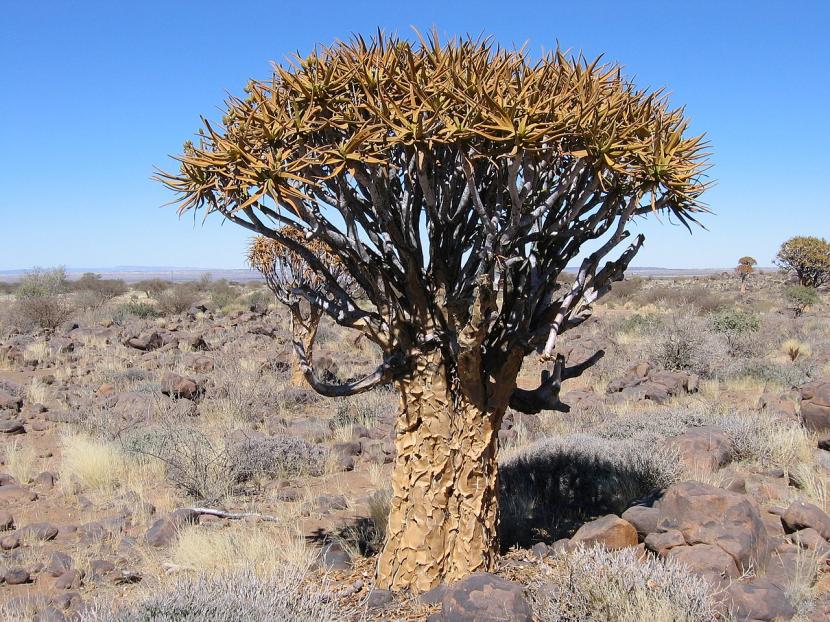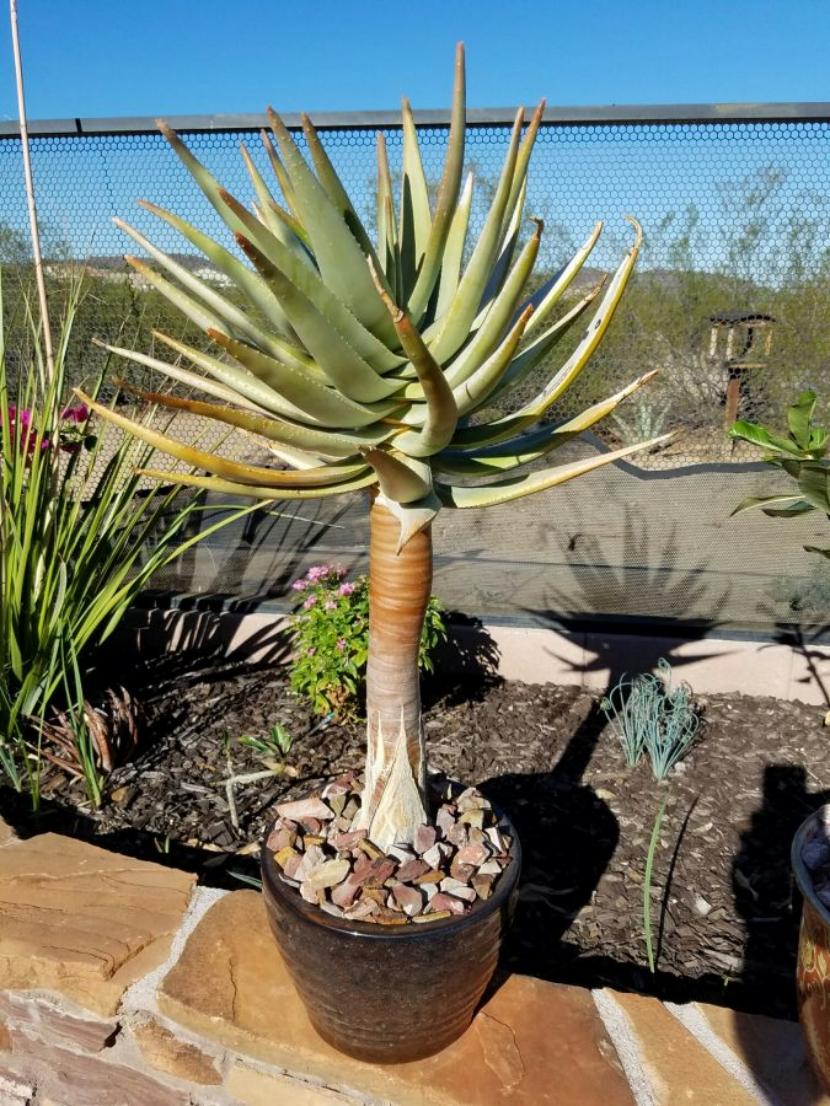
El aloe dichotoma It is one of the best known and least known caudex plants in the world. Yes, yes, it is very popular with collectors, but it is difficult to see in nurseries, especially in non-specialized ones.
Despite being a rarity for many, its cultivation and maintenance the truth is that they are very simple; so that if you get a specimen, you will only have to take into account the advice that I am going to offer you here, in the file of this wonderful species.

aloe dichotoma is the name of a South African and Namibian species that belongs to the Xanthorrhoeaceae family and the Asphodeloideae subfamily. It was described by Francis Masson and published in Philosophical Transactions of the Royal Society in 1776.
It is an arborescent aloe that it can reach an approximate height of 5-6 meters, with a highly branched crown formed by rosettes of fleshy and long bluish-green leaves. The trunk, although not very thick, can reach a diameter of 50cm. Its bark is very peculiar, since it serves to protect it from the strong African sun.
The flowers sprout during the summer in the adult specimens, and are distributed in inflorescences whose appearance resembles that of the spike.

Image from Agaveville.org
If we talk about its care, it behaves like a relatively easy plant to maintain. In fact, You just have to locate it in an area where the light of the king star gives it directly throughout the day and plant it in a pot with a substrate that has excellent drainage., like pomx or washed river sand. I strongly discourage substrates such as peat, since they are very difficult to root.
Irrigation has to be very little: every 10 days in summer and every 20-25 days the rest of the year. So that it can have an optimal development, it will be necessary to fertilize it with liquid fertilizer for cacti and other succulents following the indications specified on the product packaging, or with Blue Nitrofoska.

As it has a slow growth rate, it will be enough to change the pot every 3-4 years, during the spring.. If we prefer, we can plant it in the garden, as long as a planting hole of at least 50x50cm is made and the soil is mixed with perlite so that there is more perlite than soil.
Finally, it is interesting as well as important to say that, although it is of tropical origin, it is able to withstand mild and occasional frosts of up to -2ºC.